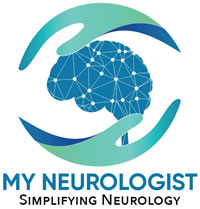In this condition there is excessive increase of heart rate when the patient stands from a sitting or lying position, without a significant change in blood pressure. Increase in heart rate is more than 30-40 beats from the lying or sitting state.
What age group do POTS affect?
POTS is a young age disorder, usually between ages 15-50. Women are affected much more than men.
What physiological changes happen in POTS?
In physiological terms, POTS leads to two problems:
- Lowering of blood supply to the brain: Normally blood vessels in legs and lower parts of the body contract to push blood upwards. In POTS, due to multiple reasons, blood may pool in legs and lower parts of body, which ultimately leads to lowering of blood flow to brain.
- Over-activation of sympathetic nervous system: Sympathetic nervous system helps to push blood towards heart. But in an over-activated state, too much nor-adrenaline is secreted, which leads to multiple symptoms.
What are the symptoms of POTS?
Symptoms due to lowering of brain blood supply: Lightheadedness, dizziness, blurred vision, hearing dysfunction, legs or generalized weakness, and cognitive difficulties.
Symptoms due to over-activation of sympathetic nervous system: Palpitation, chest discomfort, difficulty breathing, shaking, sweating, pallor, anxiety, nausea, headache, cold extremities, and bluish discoloration of extremities.
What factors may trigger POTS?
In patients with POTS, certain factors may trigger symptoms. Exposure to heat, physical exertion, large meal, menses, lying flat for long time, and exposure to some medicines, such as “water pill,” may trigger symptoms.
Are there different types of POTS?
Depending underling problem, not every patient with POTS has the same or every symptom. Generally speaking, there are two types:
- Neuropathic POTS: Due to a type of neuropathy affecting sympathetic nerves in legs.
- Hyperadrenergic POTS: Due to over-secretion of nor-epinephrine.
What other conditions co-exist with POTS?
Many conditions may co-exist with POTS. Following are some examples:
- Chronic migraine type headaches
- Irritable Bowel Syndrome (IBS)
- Interstitial cystitis
- Chronic fatigue syndrome
- Fibromyalgia
- Insomnia
- Weight loss
- Flushing
- Diarrhea
How is POTS diagnosed?
It is diagnosed by taking a through history, physical examination, and confirmation of positional tachycardia by measuring heart rate in lying, sitting, and standing positions. A test called “Tilt-table Test,” can also help.
How is POTS treated?
There is no specific treatment for this condition. Following measures can help:
- Ample hydration
- Higher salt intake, provided there is no evidence of heart or kidney failure
- Leg exercises
- Legs compression stockings
Is there a medicine for POTS?
There is no medicine to completely stop symptoms of POTS. Following meds may help:
- Beta blockers like propranolol
- Pyridostigmine
- Midodrine
- Fludrocortisone
- Droxidopa
- Ivabradine
Where can I get more information about POTS?


Leave a Reply
Your email is safe with us.
You must be logged in to post a comment.